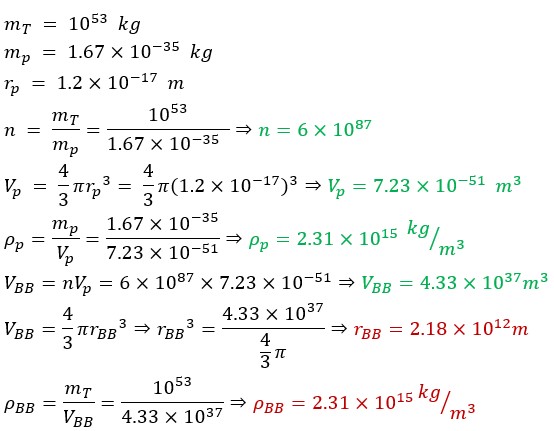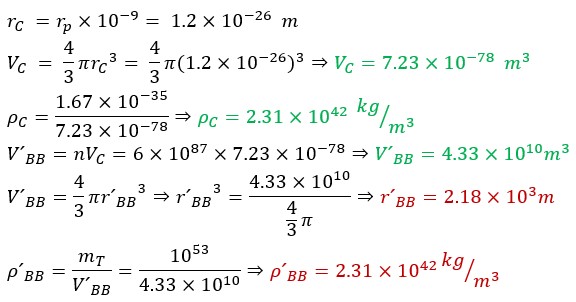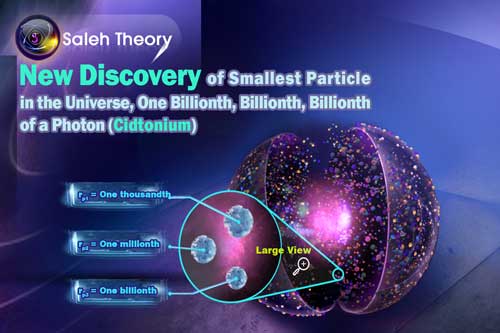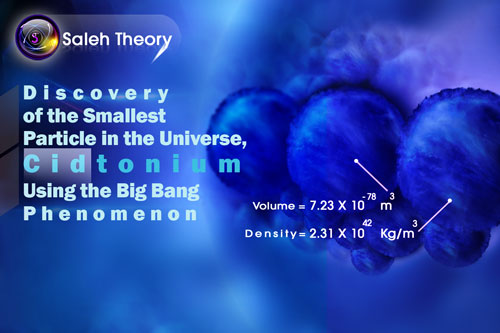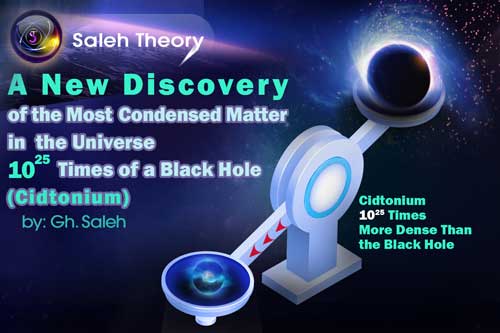
A New Discovery of the Most Condensed Matter in the Universe, 1025 Times of a Black Hole (Cidtonium)
If we want to get the constituent of the Big Bang, we can suggest the photon as the option which is the smallest, lightest, fastest, and ... particle in the world. According to this particle, the volume and density of the Big Bang will be:

Where mT is the total mass of universe, n is the number of photon, mp, rp, Vp and ρp are the mass, radius, volume and density of the photon and rBB, VBB and ρBB are the radius, volume and density of the Big Bang sphere.
Considering that the density of the Big Bang obtained by using photons is not more than 1015 𝑘𝑔/𝑚3 and the radius of the Big Bang sphere will be from the Earth to Jupiter. So, it could not be a suitable choice for the Big Bang, because it does not meet the definition that we expect for the Big Bang. In order to achieve our desired goal, we define a particle whose radius is one billionth of a photon, “Cidtonium”. According to definition of this new particle we have:
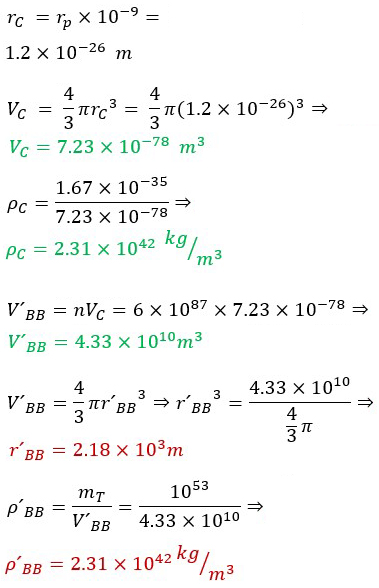
Where mT is the total mass of universe, n is the number of Cidtonium, rC, VC and ρC are the radius, volume and density of the Cidtonium and rˊBB, VˊBB and ρˊBB are the radius, volume and density of the Big Bang sphere based on Cidtonium.
It is clear that the size of the Big Bang sphere is about the Moon and the density is about 1042 𝑘𝑔/𝑚3. Therefore, this particle could be a suitable choice for the nature of the Big Bang.
Result
The defined particle is the same sub-photon, which its radius is 10-9 of a photon, or its volume is 10-27 of the volume of a photon.

